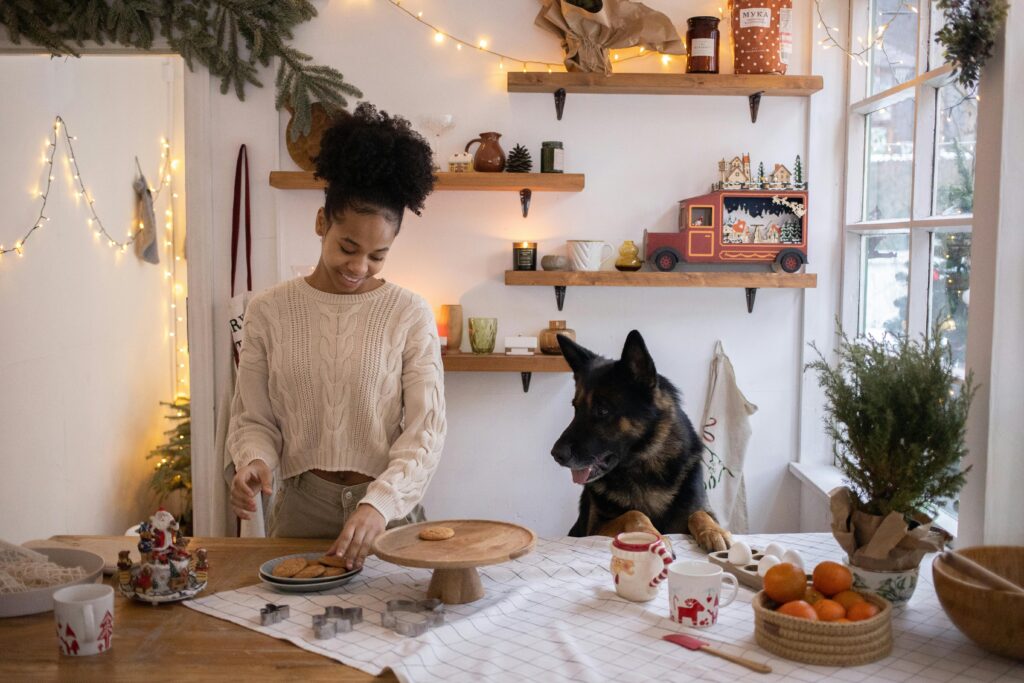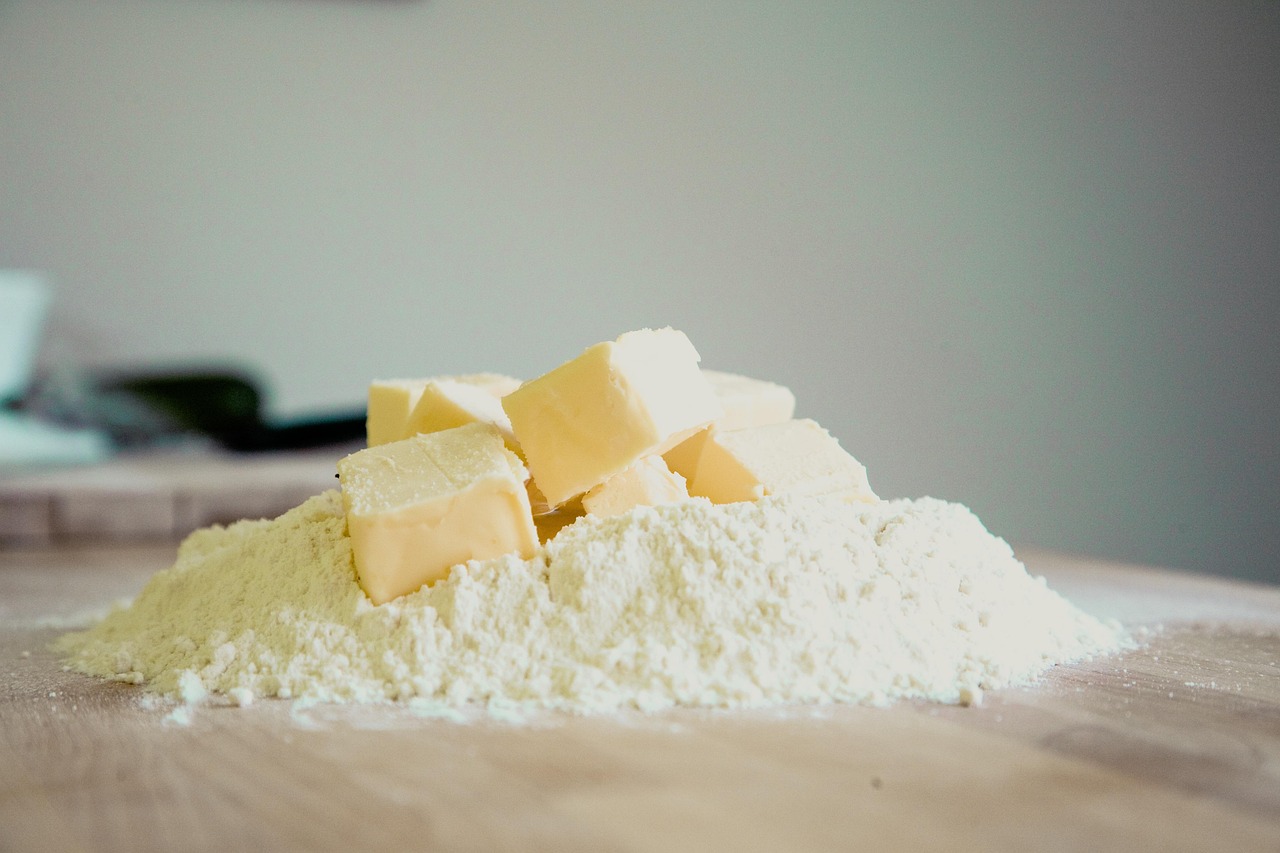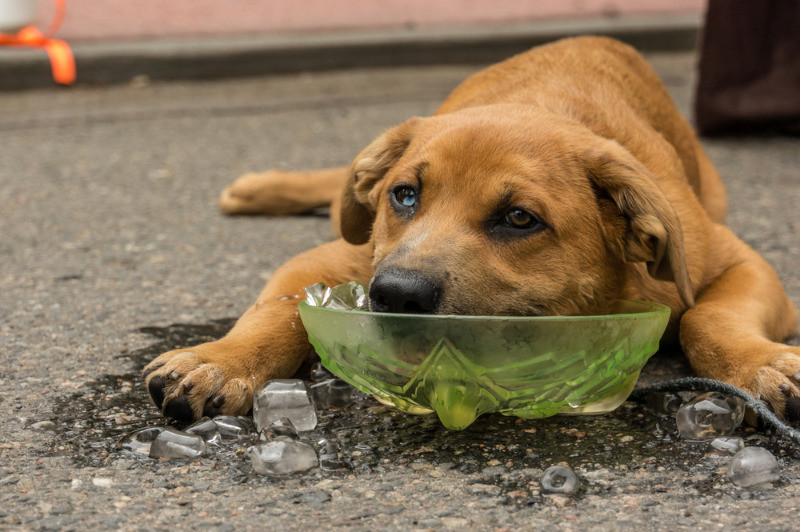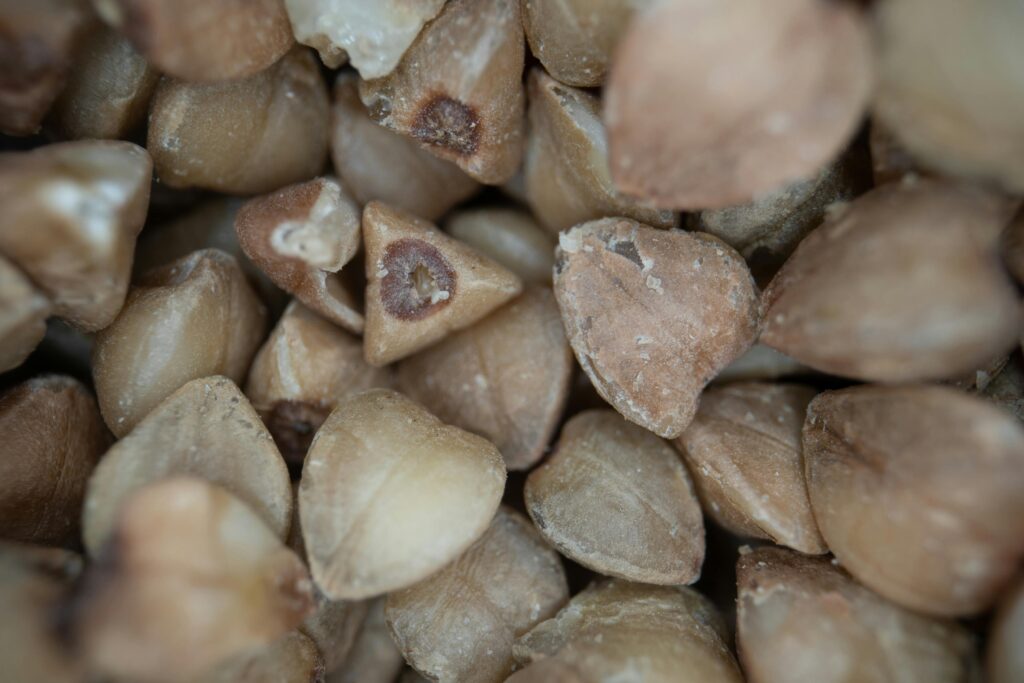- Understanding Baking Soda and Its Common Uses
- Is Baking Soda Safe for Dogs?
- Symptoms of Baking Soda Poisoning in Dogs
- What to Do If Your Dog Eats Baking Soda
- How Much Baking Soda Is Dangerous for Dogs?
- Preventing Baking Soda Accidents at Home
- Natural Alternatives to Baking Soda Around Dogs
- Myths and Misconceptions About Baking Soda and Pets
- Vet Recommendations and Expert Advice
- When Baking Soda Is Used in Dog Products
- Behavior Training: Stopping Dogs From Eating Everything
- Real Pet Owner Stories
- Final Thoughts on Baking Soda and Dogs
- FAQs
Yes, baking soda can be harmful to dogs if ingested in large quantities. While a small amount might not cause significant problems, excessive consumption can lead to vomiting, diarrhea, lethargy, and more serious issues like tremors or seizures.
Dogs have a knack for sniffing out things they shouldn’t eat—socks, chocolate, trash, and yes, even baking soda. It’s common in most households, but few pet owners realize it can be dangerous. If you’ve ever caught your pup licking up some white powder from the floor or munching on a spilled baking soda box, you’re not alone. But is it really harmful? And what should you do if it happens?
Let’s break it all down in detail—starting from what baking soda is, whether it’s toxic to your furry friend, and what immediate actions you should take. From expert advice to real-life pet stories, this guide covers everything you need to know to protect your dog from this sneaky household hazard.
Understanding Baking Soda and Its Common Uses
What is Baking Soda?
Baking soda, scientifically known as sodium bicarbonate, is a white, crystalline powder commonly used in cooking, cleaning, and deodorizing. It’s mildly alkaline, meaning it can neutralize acids, making it useful in everything from recipes to stain removal. It fizzes when combined with acids like vinegar or lemon juice, which is why it’s a staple in baking.
But while baking soda might be great for scrubbing your sink or helping bread rise, it’s not exactly canine cuisine. Inside a dog’s body, baking soda can quickly disrupt the natural pH balance and cause a cascade of health issues—especially if consumed in large amounts.
In the wrong quantities, its chemical composition can upset your dog’s stomach, leading to more serious symptoms if left untreated. So while we see it as a harmless pantry item, it’s definitely not pet-safe without caution.
Common Household Uses of Baking Soda
You’ve probably used baking soda in one (or more) of these ways:
- Baking and Cooking: It’s a leavening agent.
- Cleaning Agent: Excellent for deodorizing trash cans, carpets, and even fridges.
- Personal Care: Found in some toothpaste and skin scrubs.
- Pet Care Products: Oddly enough, it’s sometimes in dog shampoos or deodorizing powders—though in controlled amounts.
This wide range of uses means your dog can encounter it more often than you think. Whether it’s licking a carpet spot or nosing through the trash, the risks are everywhere.
Why Baking Soda Might Attract Your Dog
Dogs are curious by nature and often explore with their mouths. That white powder might smell bland to us, but to a dog, it might carry the scent of the food it was used in—or just seem like something new to taste. Some baking soda-based products, like toothpastes or treats, even contain flavor additives, which could further tempt your pup.
Also, dogs with pica—a condition where they eat non-food items—are at higher risk of ingesting substances like baking soda. Even well-trained pets can sometimes surprise us, which is why it’s essential to understand what could happen if they do get into it.
Is Baking Soda Safe for Dogs?
Toxicity Levels in Dogs
The short answer: baking soda is toxic to dogs in moderate to large amounts.
Just a few teaspoons can cause issues in small dogs. When baking soda enters your dog’s digestive tract, it reacts with the acids in their stomach, producing carbon dioxide gas. This reaction can lead to bloating, discomfort, and even rupture of the stomach or intestines in severe cases. The risk becomes more serious if the baking soda is ingested in dry form without food.
In larger quantities, it can cause:
- Muscle spasms
- Tremors
- Disorientation
- Vomiting and diarrhea
- Seizures
- Even death, if untreated
Factors That Influence Toxicity
Several factors determine how dangerous baking soda will be for your dog:
- Dog’s weight and size: A Chihuahua is much more vulnerable than a Great Dane.
- Amount consumed: A lick might not hurt, but a few tablespoons can be lethal.
- Dog’s overall health: Dogs with kidney or digestive issues are at greater risk.
- Empty or full stomach: An empty stomach increases the absorption rate.
Because of these variables, it’s never safe to assume any amount of baking soda is “fine” without consulting a vet.
Small vs. Large Amounts – When Is It Dangerous?
A general rule of thumb: anything more than 1 teaspoon per pound of body weight can be toxic. So, a 10-pound dog that consumes more than 10 teaspoons (about 3 tablespoons) is in a danger zone. That might sound like a lot, but remember—dogs can be fast when they’re curious.
Even small amounts can cause stomach upset. So even if it doesn’t lead to toxicity, it could still mean vomiting, discomfort, and a trip to the vet.
Symptoms of Baking Soda Poisoning in Dogs
Immediate Signs to Watch For
If your dog has consumed baking soda, the first few hours are critical. You’ll want to look out for signs like:
- Vomiting or retching
- Excessive drooling
- Diarrhea
- Pacing or restlessness
- Swollen belly from gas buildup
These symptoms often show up within 1 to 3 hours of ingestion, though some dogs might react sooner depending on their sensitivity.
Long-Term Health Effects
Left untreated, baking soda poisoning can lead to:
- Electrolyte imbalances
- Internal organ damage
- Respiratory distress
- Heart irregularities
- Seizures or comas
Even if your dog seems okay after ingesting a small amount, it’s crucial to monitor their behavior for the next 24–48 hours. Long-term issues may develop quietly.
Differences in Reactions by Dog Size and Breed
Small breeds, like Yorkies or Dachshunds, are more vulnerable to toxicity due to their lower body weight. Puppies are also at higher risk because their digestive systems are still developing.
Meanwhile, larger breeds may tolerate slightly more but aren’t immune. Certain breeds like Bulldogs or Boxers, which are prone to digestive issues or bloat, may react more severely—even to moderate doses.
What to Do If Your Dog Eats Baking Soda
First Aid at Home
The moment you suspect your dog has ingested baking soda, don’t wait.
- Remove access to the baking soda immediately.
- Check the quantity—estimate how much your dog may have eaten.
- Do NOT induce vomiting unless instructed by a vet.
- Monitor symptoms closely—note the time of ingestion and changes in behavior.
You can offer a small amount of water to help dilute the substance if your dog isn’t vomiting or having trouble breathing. But avoid giving any food or medications unless directed by a vet.
When to Call the Vet
Call your vet or a pet poison hotline right away. Here’s what you’ll need to tell them:
- Your dog’s weight, age, and breed
- Approximate amount ingested
- Time of ingestion
- Current symptoms (if any)
In many cases, they’ll advise bringing your dog in for an evaluation—even if symptoms haven’t shown up yet.
What to Expect at the Veterinary Clinic
At the vet, your dog might receive:
- Activated charcoal to absorb toxins
- IV fluids to flush the system
- Anti-nausea meds
- Blood tests to assess organ function
- Hospital monitoring if symptoms are severe
Early treatment dramatically improves the odds of a full recovery.
How Much Baking Soda Is Dangerous for Dogs?
Determining a “danger threshold” for baking soda ingestion can be tricky, but a useful rule of thumb is that 1 teaspoon per pound of body weight is potentially hazardous. That means a 10-pound dog could be dangerously affected by 10 teaspoons (about 3 tablespoons). For larger dogs, the proportion scales up—but remember, even smaller amounts can initiate adverse reactions.
Why This Matters
It’s not just about reaching that teaspoon-per-pound mark. Some dogs may have stomach upset after much less, especially if they have a sensitive gut or existing health issues. On the flip side, unusually hardy dogs might appear unaffected at slightly higher doses, though that doesn’t mean they’re safe.
Real‑Life Cases
Veterinary reports often highlight melting points in ingestion:
- A Chihuahua consuming 2–3 teaspoons of baking soda presented with vomiting and mild lethargy but recovered after fluids and monitoring.
- A German Shepherd, having ingested a half-cup (8 tablespoons), experienced tremors and electrolyte imbalance—and required hospitalization.
Though rare, ingestion of 1–2 tablespoons per 10 pounds can cause clinical signs. If your dog sampled a teaspoon or two, it’s wise to keep a close watch rather than assume immunity.
Comparison With Other Substances
For context, many household items have different toxicity profiles:
- Xylitol (sweetener) is extremely toxic—even a few pieces of gum can be deadly.
- Baking powder (contains sodium bicarbonate and acid salts) is similarly dangerous but can be more irritating due to added ingredients.
- Dish soap or bleach, when ingested in small amounts, may cause mild gastro upset—but baking soda is uniquely disruptive because of carbonation in the stomach.
Bottom line: no amount of baking soda should be considered “safe” without at least consulting a vet.
Preventing Baking Soda Accidents at Home
Safe Storage Tips
Start by placing all baking soda in sealed containers, preferably in cabinets or on higher shelves the dog can’t reach. Spilled baking soda left in open containers or trash cans is a magnet for curious pups—choose secure lids or store in hard-to-access areas.
Educating Family Members
Make sure everyone in the household—kids included—knows the risks. Even seemingly harmless habits like leaving the box open on the counter invite trouble. A quick family chat about pet safety can prevent accidents before they happen.
Dog‑Proofing Your Home
Think like a burglar: what’s the most tempting spot? Trash bins, low shelves, under-sink cupboards are prime targets. Equip these with child-safety latches and tall doors. Consider motion-activated deterrents or baby-gates to protect entire rooms or cleaning areas.
More Tips
- Don’t leave cleaning mixtures unattended—especially if they contain baking soda.
- Label homemade pet products clearly—if you use baking soda in DIY dog shampoos or toothpaste, store them under label in a cabinet.
- Opt for sealed pouch packets over open boxes—they’re harder for dogs to raid.
Prevention isn’t just about storage—it’s about creating a pet-safe mindset in your household.
Natural Alternatives to Baking Soda Around Dogs
Looking for pet-safe solutions that work as well as baking soda? Here are a few options:
Pet‑Safe Cleaning Products
Many manufacturers now offer enzymatic cleaners and biodegradable sprays formulated with dogs in mind. These products are specifically labeled “pet-safe” and often avoid harsh chemicals. For deodorizing floors or carpets, look for ones that leverage citrus, enzymes, or mild essential oils.
Homemade Remedies and Substitutes
- Vinegar-and-water solution: A 1:1 mix can cut grease and odors effectively (test on a small area first to avoid discoloration).
- Cornstarch: Works well for carpet freshening—just sprinkle, wait, vacuum.
- Baking soda with essential oils: If you want the same fizz and smell, sprinkle dish-safe citric acid and mild essential oil into a sealed pouch, not loose.
Understanding Labels on Pet Products
In choosing pet-safe items, always check:
- The Ingredients list
- Whether it’s EPA-certified or includes pet-safety seals
- If it’s non-toxic for dogs and cats
Avoid items containing phenols, bleach, detergents labeled “not for pet surfaces,” or scents like tea tree oil, which can be toxic to pets.
Myths and Misconceptions About Baking Soda and Pets
Debunking Common Beliefs
- “A little can’t hurt.” Wrong. Even small doses can cause vomiting, discomfort, and electrolyte imbalance.
- “It’s natural, so it’s safe.” Not always. Just because baking soda is used in cooking or natural cleaning doesn’t mean it’s harmless to dogs—even “natural” compounds can upset a pet’s system.
Internet Remedies That Could Harm Your Dog
One widely circulated tip suggests using baking soda paste to soothe dog skin. But when applied topically and ingested during licking, it can be irritating—or toxic if licked off in large quantities. Similarly, using baking soda to induce vomiting at home can cause more harm than good.
Trusted Resources to Rely On
Instead of DIY searches, run to:
- The ASPCA Poison Control website
- Veterinary apps like Pet Poison Helpline
- Websites from veterinary schools (e.g., Cornell Vet, Purdue Vet)
They offer vet-reviewed guidance—no guesswork.
Vet Recommendations and Expert Advice
What Vets Say About Baking Soda
Veterinarians generally agree: baking soda is not safe for dogs when ingested beyond trace levels. It disrupts stomach pH, causes gas buildup, and can lead to more serious problems like electrolyte imbalance or seizures.
Professional Tips on Emergency Response
- Have your vet or poison hotline on speed dial before accidents happen.
- Know your pet’s weight and age, and note exact ingestion times.
- Avoid home remedies like forced vomiting or activated charcoal unless advised.
How to Stay Informed
- Schedule yearly wellness exams to keep your vet aware of your pet’s health baseline.
- Sign up for updates from trusted sources: ASPCA, Pet Poison Helpline, AAFP (American Association of Feline Practitioners)—they frequently publish articles and safety tips.
When Baking Soda Is Used in Dog Products

Is It Ever Safe in Dog Toothpaste or Shampoo?
Interestingly, baking soda does make its way into some commercial dog grooming and dental care products—but in highly controlled, minimal amounts. For example, dog toothpaste sometimes contains trace levels of baking soda for its mild abrasive qualities, helping to clean plaque without damaging enamel. Similarly, certain dry shampoos for dogs use it to neutralize odors.
So is it safe?
Yes—but only if used correctly and not ingested in significant quantities. When formulated by pet product manufacturers, the concentration is diluted and tested for animal safety. But using human-grade baking soda as a DIY substitute is risky. Dogs lick their fur and can ingest enough to cause a reaction—especially after a bath.
Regulatory Guidelines for Pet Products
Pet grooming and dental products are typically regulated by the FDA and EPA in the U.S., with oversight depending on whether it’s considered a drug, cosmetic, or pesticide. Most reputable brands perform toxicity tests and follow pet-safe formulation guidelines, especially regarding ingredients like sodium bicarbonate.
Look for products that say:
- “Safe if licked”
- “Veterinarian-recommended”
- “Tested for animal use”
And avoid anything not explicitly labeled for pets—even if the ingredients sound “natural.”
How to Choose Safe Grooming Supplies
When choosing toothpaste or shampoo for your dog:
- Stick to pet-specific brands
- Read labels carefully
- Avoid DIY baking soda mixtures
- Talk to your vet before using any new product
Bottom line: baking soda can be used topically in trace amounts—but never assume it’s safe for ingestion unless verified.
Behavior Training: Stopping Dogs From Eating Everything
Why Dogs Ingest Random Substances
Dogs are natural scavengers—in the wild, their ancestors would eat whatever they could find. That instinct hasn’t disappeared, which is why your dog might try to eat rocks, grass, socks, and yes, baking soda. This behavior can also be a sign of boredom, anxiety, or nutritional deficiencies.
Some dogs even suffer from pica, a condition where they compulsively eat non-food objects. This can be dangerous and requires intervention.
Training Techniques to Prevent It
To help your dog stop eating random things:
- “Leave it” Command: Train your dog to respond to this phrase with rewards. It’s a game-changer during walks or indoor mischief.
- Interactive Toys: Keep their minds busy. Puzzle toys, treat-dispensing balls, and chew toys reduce curiosity-based ingestion.
- Supervised Access: Keep them out of rooms with cleaning supplies, pantries, or trash. Supervise or crate when you’re away.
- Deterrent Sprays: Use taste deterrents like bitter apple spray on areas or objects they tend to chew.
When to Seek Help From a Trainer
If the issue persists:
- Consult a professional trainer who specializes in behavior correction.
- Look for a Certified Professional Dog Trainer (CPDT)—they’ll use humane, effective methods.
- Vet checkup first: Rule out medical issues like malabsorption, parasites, or thyroid disorders.
Behavioral training not only improves safety but builds a better bond with your pup. Prevention always beats a vet emergency.
Real Pet Owner Stories
Cases of Baking Soda Ingestion
It’s one thing to read about baking soda dangers—it’s another to hear it from real pet owners. Here are a few stories:
Case 1: “Oscar the Beagle”
Oscar got into the baking cabinet and ate about 3 tablespoons of baking soda. Within two hours, he was bloated and vomiting. His owner rushed him to the emergency vet. After IV fluids and monitoring, Oscar recovered—but his owner now uses baby locks on every cabinet.
Case 2: “Maya the Labrador”
Maya licked some baking soda paste off the floor after a DIY cleaning spree. She had mild diarrhea for a day but didn’t show serious symptoms. Her vet advised fluids and rest, and she was back to normal the next day. Lesson: Always clean up fully after using homemade cleaners.
Case 3: “Gizmo the Yorkie”
Gizmo had chronic skin allergies, and his owner tried a DIY baking soda bath. Gizmo licked himself dry and started vomiting the next day. After a vet visit and an overnight stay, he stabilized. The vet warned against using homemade treatments without guidance.
How They Handled It
The common thread in all stories? Quick action. Each owner took symptoms seriously and contacted their vet immediately. This likely saved their pets from more serious outcomes.
Lessons Learned from Experience
- Lock up all pantry and cleaning products
- Don’t trust “natural” DIY recipes for pets
- Know your dog’s behavior and watch for signs of boredom or chewing
Final Thoughts on Baking Soda and Dogs
Summary of Key Points
Baking soda may seem like a harmless kitchen staple, but when it comes to dogs, it can be a hidden danger. Whether it’s licked off the floor or snuck out of the trash, even moderate ingestion can lead to vomiting, bloat, tremors, and worse.
- It’s not safe in large quantities—even a tablespoon could be toxic for small breeds.
- Always call your vet if ingestion is suspected.
- Symptoms appear quickly—watch closely for signs of distress.
- Safe alternatives and proper storage can help prevent accidents.
- Never rely on DIY advice unless verified by a vet or credible pet organization.
Importance of Pet Safety Awareness
We all want the best for our pets—but protecting them means being proactive. Know what’s in your home, educate your family, and be prepared for emergencies. Your dog may not understand the risks, but you do—and your vigilance could make all the difference.
FAQs
Can a small amount of baking soda kill a dog?
In small amounts, baking soda may not be fatal, but it can still cause vomiting and stomach upset. Larger doses—especially in small dogs—can be life-threatening. Always consult a vet if your dog ingests it.
What should I do if I can’t reach a vet right away?
Call a pet poison hotline like ASPCA Poison Control (888-426-4435) or Pet Poison Helpline (855-764-7661). Keep your dog calm and monitor symptoms. Never induce vomiting without guidance.
Is baking powder also harmful to dogs?
Yes—baking powder can be even more dangerous due to added acid salts. It poses a similar risk of bloating, vomiting, and toxicity.
Are there safe household ingredients I can use instead?
Yes. Try vinegar and water for cleaning or cornstarch as a deodorizer. Always double-check that ingredients are pet-safe before use.
How do I know if my dog is recovering well?
Improvement in energy, appetite, and bathroom habits are good signs. But schedule a follow-up vet visit to ensure full recovery—some symptoms may be delayed.
Please don’t forget to leave a review.




